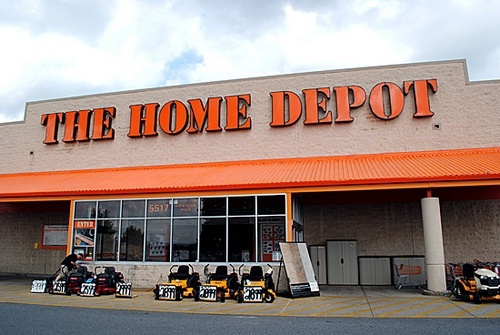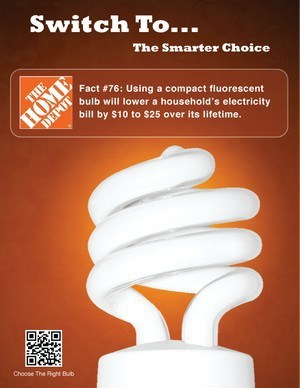The Marketing mix of Home Depot analyses the 4Ps of Home Depot, which includes the Product, Price, Place, and Promotions. Home Depot is a public company that belongs to the retail industry. It is simply a superstore that provides supplies for home improvement and includes services, products, and tools. It was founded in 1978 by its co-founders Pat Farrah, Arthur Blank, and Bernard Marcus, and it has its headquarters in Georgia, which is located in the United States. Home Depot has become the largest retailer in the home improvement department in the United States in terms of total revenue. Some of its vital competitors are as follows-
- Lowe’s Companies
- True Value Company
- Menard, Inc
About Home Depot
- Type: Multinational home improvement retailer
- Industry: Retail
- Founded: 1978
- Founders: Bernard Marcus, Arthur Blank, Ken Langone, Pat Farrah, Ron Brill
- Headquarters: Atlanta, Georgia, United States
- Area served: United States, Canada, Mexico
- Current CEO: Edward Decker
- Number of employees: 490,600
- Major products: Tools, construction products, appliances, and services
Table of Contents
Home Depot Product Strategy
Home Depot is a supplier providing innumerable services and products to numerous customers. Its chief products are as follows-
- Retail services along with the option of expert advice
- Contractor and professional services and products specifically aimed at them, like janitorial and cleaning equipment, plumbing kits, lumber, painting supplies, and paints.
- Products for home improvement are derived from third parties.
- House brands of Home Depot like Kilz for paints, Behr, Hampton Bay for furniture and fixtures, Glacier Bay for fixtures, and Husky for various tools
- Building, home improvement materials, and garden & lawn products include appliances, lighting, bath, fans, grills, windows, doors, kitchen, and patio sets.
Home Depot’s product mix mainly comprises four key elements.
The new Product mix of Home Depot in 2023 is as follows (Source).
- Retail Service with Expert Advice: This is the core offering of Home Depot, where they provide retail service, including advice from field experts like carpenters and plumbers.
- Professional and Contractor Services: These services are targeted towards home improvement professionals and contractors, emphasizing the quality of service provided.
- Home Improvement Goods from Third Parties: The majority of goods in Home Depot’s stores are from third-party manufacturers. Home Depot is an exclusive seller for some of these brands.
- Home Depot House Brands: The company owns several house brands, like Husky (tools), Glacier Bay (fixtures), and Commercial Electric.
Additionally, a detailed categorization of products available at Home Depot includes:
- Appliances
- Bath & Faucets
- Blinds & Window Treatment
- Building Materials
- Cleaning
- Decor & Furniture
- Doors & Windows
- Electrical
- Flooring & Area Rugs
- Hardware
- Heating & Cooling
- Kitchen & Kitchenware
- Lawn & Garden
- Lighting & Ceiling Fans
- Outdoor Living & Patio
- Paint
- Plumbing
- Seasonal Decor
- Smart Home
- Storage & Organization
- Tools
- Automotive products
- Furniture
- Gift Cards
- Credit Cards
- Home Services
- Tool Rental
- Services for Professionals
- DIY Projects.
This expansive range reflects Home Depot’s commitment to catering to a wide array of customer needs in the home improvement sector.
Home Depot Place Strategy
Home Depot is a superstore that sells various materials to do-it-for-me or DIFM consumers, do-it-yourself or DIY consumers, and professional clients like general contractors, professional remodelers, repairers, tradespeople, and owners of small businesses. Home Depot operates as a format store and has its network located across all fifty states of the United States, Mexico, and every one of the ten provinces situated in Canada.
It has a distribution channel comprising efficient workers, and its operations are carried out at large buildings built in warehouse-style, and each is situated at nearly 105,000 square feet of area. It also has numerous megastores that operate on further, more extensive facilities. For instance, Vauxhall is its largest store in New Jersey, with an area of 225,000 square feet.
Home Depot is located in nearly 2,274 locations and has just about 371,000 employees to help it provide the best possible results with maximum efficiency. The company has undertaken various measures to introduce successful transactions over its online stores as it recognizes people’s changing needs and habits from buying online stores to save time.
It has a dual option where customers can pick up their order or have it delivered to their place. Home Depot offers mobile app services to locate their Home Depot stores and place orders online.
Home Depot’s place strategy can be summarized in the following points:
- Warehouse-Style Stores: The primary locations for Home Depot’s sales are its warehouse-style stores, which are strategically designed for efficiency and customer convenience. These stores are where most of the company’s sales transactions occur, reflecting the importance of physical retail in their business model.
- Extensive Store Network: As of the first quarter of fiscal 2023, Home Depot operated a total of 2,324 retail stores across all 50 states in the U.S., as well as in the District of Columbia, Puerto Rico, the U.S. Virgin Islands, Guam, 10 Canadian provinces, and Mexico. This extensive network ensures wide accessibility for customers in different regions.
- Online Store and E-Commerce Growth: Home Depot has significantly invested in its e-commerce offerings, focusing on distribution capability, supply chain management, and integration of web and store inventory. This reflects a strategic shift to cater to the growing trend of online shopping and provides customers with a seamless shopping experience.
- In-Store Pickup for Online Orders: Nearly half of Home Depot’s e-commerce transactions involve in-store pickup. This approach leverages the company’s physical assets and provides convenience to customers, blending the online and offline shopping experience.
- Mobile Application for Enhanced Accessibility: Home Depot offers mobile apps that enable customers to locate stores and place online orders. Integrating mobile technology into their place strategy enhances customer engagement and accessibility, offering a more personalized shopping experience.
Collectively, these strategies emphasize Home Depot’s commitment to providing a seamless, accessible, and efficient shopping experience, both in-store and online, aligning with modern consumer behaviors and preferences.
Home Depot Pricing Strategy
Home Depot is currently at the top position in retail marketing, and it has achieved this position through its various pricing policies that have helped it to ensure competitiveness but not at the cost of revenues. It uses a GLP pricing strategy commonly called guaranteed low price. This pricing strategy is similar to that used by Walmart, but since Walmart is also a strong competitor for Home Depot, this is the pricing strategy Home Depot has had to employ. In general, it can be classified as penetration pricing. It is aligned with the generic strategy of Home Depot to attract customers for home improvement products, and hence, it continues to offer the lowest prices for qualitative products.
It also provides good products at very reasonable rates to gain a more extensive consumer base. The company generates tremendous revenue through its online stores, giving periodic discounts, new schemes, and other offers to maintain its consumers. Sometimes, it provides a cut of 20% for products like professional saws, kitchen faucets, and play sets. It also provides a Special Buys scheme on some appliances and offers a discount from 20% up to 25%, and these products include refrigerators and washers.
Home Depot’s pricing strategy is critical to its marketing mix and sales promotions. It is designed to cater to a broad customer base while maintaining competitiveness in the home improvement market. Key aspects of this strategy include:
- Everyday Low Price (EDLP) Strategy: Home Depot employs the EDLP strategy, setting price ranges and consistently low points daily. This approach was a part of their initial advertising and continues to be a central element of their pricing philosophy. The EDLP strategy aligns with Home Depot’s emphasis on high-quality service, including expert advice, to attract and retain customers.
- Competitive Pricing: The company ensures that its prices are competitive with other retailers in the market. This aspect of their pricing strategy is essential for maintaining a solid market position and appealing to price-sensitive consumers. Various discounts and promotions complement the strategy to attract more customers.
- Healthy Profit Margins: Home Depot maintains a healthy profit margin despite the focus on low pricing. In 2023, the company reported a gross margin of approximately 34.3%, indicative of a successful balance between competitive pricing and profitability.
- Specialized Pricing Programs for Professionals: Home Depot offers exclusive savings benefits through programs like Pro Xtra Member. These include Preferred and Volume Pricing, where Elite and VIP members receive lower-than-shelf pricing on numerous trade-specific items. This approach is particularly appealing to professional customers who make bulk purchases.
- Volume Pricing Savings: The Volume Pricing Program is designed for customers with large orders, starting on qualifying purchases of $2,500 or more. This pricing structure allows customers to save more as they buy more, encouraging more significant transactions and fostering loyalty among professional and large-scale buyers.
Home Depot’s pricing and marketing strategy is a well-crafted blend of competitive, value-based, and volume-based pricing, ensuring it remains attractive to casual DIY enthusiasts and professional contractors. This approach reflects Home Depot’s strategic goals derived from its mission and vision statements, aiming to provide a seamless shopping experience with the broadest selection of products at competitive prices.
Home Depot Promotion Strategy
Home Depot has followed a vigorous communication email marketing strategy to reach its customers and create better visibility for its services and products. It has taken the help of commercials that are shown on television and are prominent advertising tools for any company. Home Depot also uses print media and online media to highlight its services and products amongst consumers. Its efficient personnel are its leading promoters, as they help create brand awareness.
The company offers numerous special deals as part of promotional activities to maintain the complete brand loyalty of its consumers. It has a public relations team that looks after programs related to social responsibility and sponsorship deals. Under its direct selling activities, it targets contractors and professionals for various services. Home Depot has a comprehensive and diverse promotional strategy that is ever-changing to meet the consumers’ varied interests.
A critical factor in the success of Home Depot is its online website and sales. This is an intelligent move by Home Depot because the world is moving towards online purchasing, and it is well that Home Depot has moved in advance.
Some Recent Video ads and Print ads of Home Depot are:
Also read – Marketing mix of All Brands | Marketing mix of Walmart
Liked this post? Check out the complete series on Marketing Mix


I am a business man that runs a retail stores in nigeria, i need marketing strategy to increase sales in my stores.